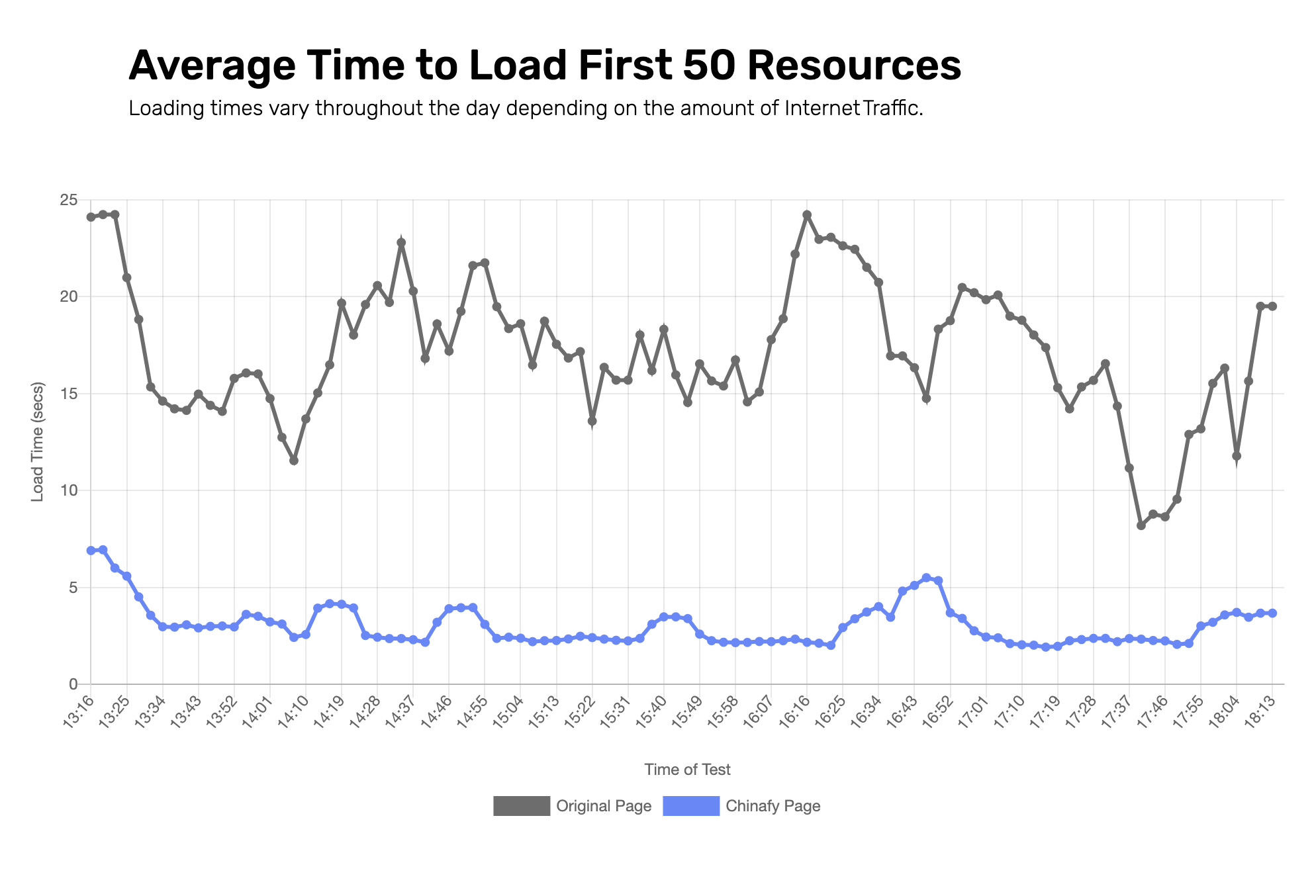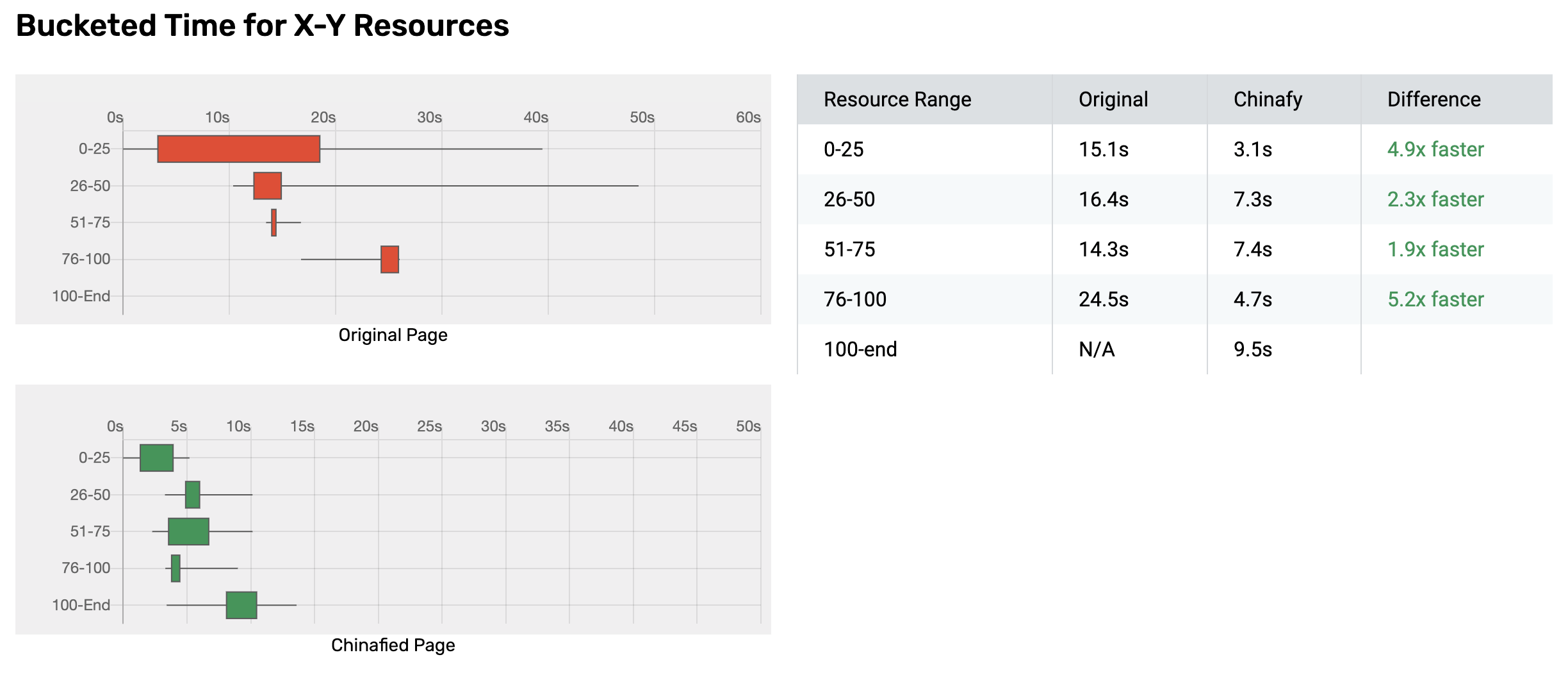1 - Expected post-Chinafy results
W Hotels, owned by Marriott International, is a luxury hotel chain geared towards a younger, savvy, social clientele. In this case study, we Chinafy a portion of their website and evaluate the findings.
Firstly, some data:
Number of Hotels: 55
Countries: 25
Number of rooms: 15,043
Site: https://w-hotels.marriott.com
as of Dec 31 2018
Secondly, a quick note on transparency:
Chinafy does not currently work with W Hotels. We have taken their landing page, applied one pass of our compatibility intelligence, and subsequently performed a series of performance upgrades. This case study is not necessarily endorsed by W Hotels, or by Marriott International.
This study will be broken down into two parts: i) General Overview, and ii) Technical Overview catering to two different audiences.
Bright lights, beautiful people, late night action - whatever that may mean to you. We've stayed at the W hotel multiple times and there's always a vibe.
For this case study, we take their main landing page: https://w-hotels.marriott.com and Chinafy it. We scan the page, evaluating each component, the method of coding, as well as the infrastructure. After reviewing our findings we take a series of steps that optimise the site across all facets of performance.

https://w-hotels.marriott.com
A single-pass of Chinafy (that is, we only took a cursory or basic attempt at optimising it), already has a substantial impact on performance. The homepage has ~200 components and with our single-pass were able to address around 45 of the 200 components. The results were incredible.
Of the 200 components, around 60-80 of them we'd call Primary resources that directly affect the visual display. The remaining 120-140 components are analytics, or what we call, Secondary resources. While a number of Secondary resources were addressed, additional optimisations can even further improve performance.
When looking at the first 50 resources (i.e. those that have a visual impact), it takes 17.2 seconds on average, for these components to load on the W Hotel's site vs 3.0 seconds with the Chinafy site - this is 570% faster than the original site. We use the Average Time as a metric in this case as it captures aggregate performance and eliminates idiosyncratic nuances that may skew data.

Wow!
We loaded the page 100 times over a 5-hour period to generate the averages above. Below is a video (played at 2x speed) showing the visual difference in loading times.
It's clear that the W Hotel, while it has a a cool, upbeat tempo in-house, externally, it has an incredibly slow site in China. Hotels push their guests to book direct - it saves intermediary fees, it builds a relationship with the end-client, but in China, this doesn't appear to be working. The site is so slow we can't imagine any rational individual booking direct given the sheer frustration.

Within the Travel domain, faster sites have a clear, measurable, and immediate impacts on revenue. When visitors are looking at multiple sites comparing the best hotel, the best price, and the best perks - if the site doesn't load within seconds, then they've lost that direct booking, and potential any booking altogether (i.e. via an intermediary).
Based on some general industry statistics, we see an immediate impact on revenue, to the tune of 4.3x more direct bookings. That's a huge number, and one not often seen with page-speed, but when you consider that the site is so slow in the first place, the denominator (i.e. current # of bookings) is rather small.

Learn how these stats are generated
We'll leave the General Overview with a histogram which looks at the frequency of page loading times - remember this is only the first 50 components (and there are >200)

It's difficult comparing sites in an apples-to-apples way. While the W hotel has closer to 200 resources on the homepage, when running our time series only 50-75 of these resources would successfully load on the original site with any given attempt. This is normal for foreign sites in China - both resources and pages time-out. We imagine their analytics may not be firing 60-70% of the time (though we'd need to do a deeper analysis to evaluate this further).
A single-pass of Chinafy captures largely the files on 3rd party domains. This addresses some, but not all of the 100+ advertising/analytics trackers which make the page incredibly clunky. A second-pass, (which we did not perform) would look at modifying JavaScript, and inline scripts, capturing even more incompatible (blocked, or otherwise slow) resources.


Chinafy is incredibly fast at scanning, and optimising sites for China. If you're looking to increase revenue, improve both predictability and reliability, reach out to us. While our technology is largely automated, we do like to see if there are any additional manual optimisations that may be appropriate. We typically can have you up and running within a day.







